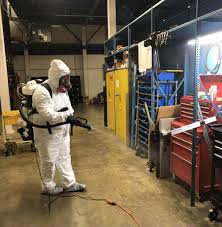Ventilation and its Role in Mold Prevention and Removal
In the dance between home maintenance and comfort, few elements play as crucial a role as ventilation. It’s not just about letting the air in; it’s about ushering out stale, moisture-laden air that invites unwelcome guests—mold. As someone who has navigated the maze of mold prevention and removal firsthand, I’ve learned that understanding ventilation isn’t just about safeguarding your home; it’s about creating a healthier living environment for you and your loved ones.
The Importance of Ventilation
Picture this: a warm, humid day, windows shut tight, and moisture trapped within the walls of your home. Without proper ventilation, this scenario can quickly spiral into a breeding ground for mold and mildew. Ventilation serves as the silent sentinel, whisking away excess moisture and preventing it from taking root in the dark recesses of your home.
Ventilation isn’t just about preventing mold; it’s about promoting air quality and circulation. By ushering in fresh air from the outdoors and expelling stale air laden with pollutants and allergens, ventilation transforms your home into a sanctuary of clean, breathable air—a haven where you can breathe easy and thrive.
Understanding Mold
Ah, mold—the bane of homeowners everywhere. From fuzzy patches on the bathroom ceiling to musty odors wafting from the basement, mold has a knack for making its presence known. But what exactly is mold, and why does it thrive in certain environments?
Mold is a type of fungus that thrives in warm, damp conditions—a fact that makes our homes an ideal breeding ground. From leaking pipes to poorly ventilated bathrooms, mold finds refuge wherever moisture lurks. Left unchecked, mold can not only damage your home’s structural integrity but also pose serious health risks to you and your family.
The Role of Ventilation in Mold Prevention
Here’s where ventilation steps into the spotlight as the unsung hero of mold prevention. By facilitating air circulation and reducing humidity levels, ventilation creates an inhospitable environment for mold growth. From exhaust fans in the kitchen and bathroom to whole-house ventilation systems, there’s no shortage of tools at your disposal to keep mold at bay.
But ventilation isn’t just about mechanical systems; it’s about integrating smart design principles into your home. Strategic placement of windows, skylights, and vents can harness natural airflow and maximize ventilation efficiency, reducing the need for energy-intensive solutions while promoting sustainability and cost-effectiveness.
Practical Tips for Effective Ventilation
Now that we’ve explored the symbiotic relationship between ventilation and mold prevention, let’s dive into practical tips for implementing effective ventilation strategies in your home:

